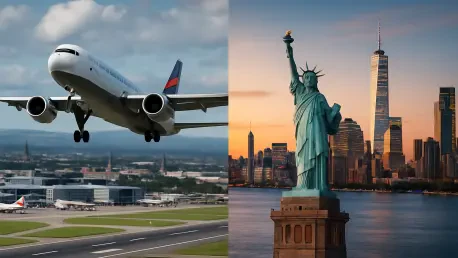I’m thrilled to sit down with Katarina Railko, a seasoned expert in hospitality and the travel and tourism industry. With her deep knowledge of entertainment, events, and industry trends, Katarina has become a trusted voice in the field, often sharing insights at expos and conferences. Today, we’re diving into the exciting news of United Airlines resuming direct flights between Glasgow and New York/Newark in May 2026, exploring what this means for connectivity, tourism, and economic growth in Scotland.
What does United Airlines’ return to Glasgow Airport after a seven-year break signify for the region and its people?
This is a game-changer for Glasgow and the surrounding area. Having a direct link to New York/Newark again is huge—it’s not just about convenience but also about re-establishing Glasgow as a key player in transatlantic travel. For the local community, it means easier access to one of the world’s most iconic cities, whether for vacations, family visits, or business opportunities. It’s a confidence boost for the airport and the city, showing that Glasgow is back on the map for major carriers like United.
Why do you think New York tops the list of most-requested destinations for Glasgow Airport passengers?
New York has a unique pull—it’s a cultural and economic powerhouse that appeals to a wide range of travelers. For many Scots, it’s the ultimate tourist destination with landmarks like Times Square and Central Park, but it’s also a hub for business and family connections. There’s a strong historical tie between Scotland and the U.S., and New York often serves as the gateway for those relationships. I think the mix of iconic experiences and personal ties makes it a perennial favorite.
How do you see this new route boosting inbound tourism from the U.S. to Scotland?
This route is a fantastic opportunity to welcome more American visitors to Scotland. The country offers so much—world-class golf courses like St Andrews, the rich heritage of whisky distilleries, and breathtaking landscapes from the Highlands to Loch Ness. Americans are drawn to these authentic experiences, and with direct flights, it’s easier than ever to make the trip. The numbers speak for themselves: U.S. travelers already contribute 720,000 bed nights and £111 million annually to Glasgow’s economy, and this route will likely push those figures even higher.
Can you explain how this flight connection will impact Glasgow’s economy beyond just tourism?
Absolutely. While tourism is a major driver, with visitor spending directly benefiting hotels, restaurants, and local attractions, there’s more to it. This route connects Glasgow to one of the world’s largest economies, opening doors for business collaborations, trade deals, and investment opportunities. It also fosters cultural exchange—think of events, conferences, and partnerships that can flourish with easier travel. The financial ripple effect touches everything from small businesses to large corporations in the region.
Why is a direct route to the U.S. East Coast considered such a critical achievement for trade and investment in Glasgow?
The U.S. East Coast, and New York in particular, is a vital market for Glasgow’s businesses. It’s a hub for finance, tech, and innovation, and having a direct link means Scottish companies can more easily pitch to investors, attend trade shows, or export goods without the hassle of connecting flights. It’s about building relationships—face-to-face meetings are often the key to sealing deals. For inward investment, it signals to American firms that Glasgow is accessible and open for business, which can attract more companies to set up shop here.
How does United’s Newark hub enhance the value of this route for travelers on both sides of the Atlantic?
Newark is a major gateway, not just to the U.S. but to destinations across North America, Latin America, and the Caribbean through United’s extensive network. For Scottish travelers, it means seamless connections to places like Los Angeles, Miami, or even Mexico City. For Americans coming to Glasgow, it’s an easy entry point from various U.S. cities. Add in the Star Alliance network, and you’ve got even more options for interline travel. It transforms this route from a single connection into a doorway to countless destinations.
What’s your forecast for the future of transatlantic travel between Scotland and the U.S. based on this development?
I’m very optimistic. This route signals a growing confidence in the transatlantic market, with airlines like United responding to pent-up demand and positive economic trends. I think we’ll see more carriers expanding services to Scotland, potentially even year-round routes if this seasonal service proves successful. It could also pave the way for other U.S. destinations to connect directly with Glasgow. The focus on tourism, business, and connectivity is only going to strengthen, making Scotland an even more prominent player in global travel networks.









